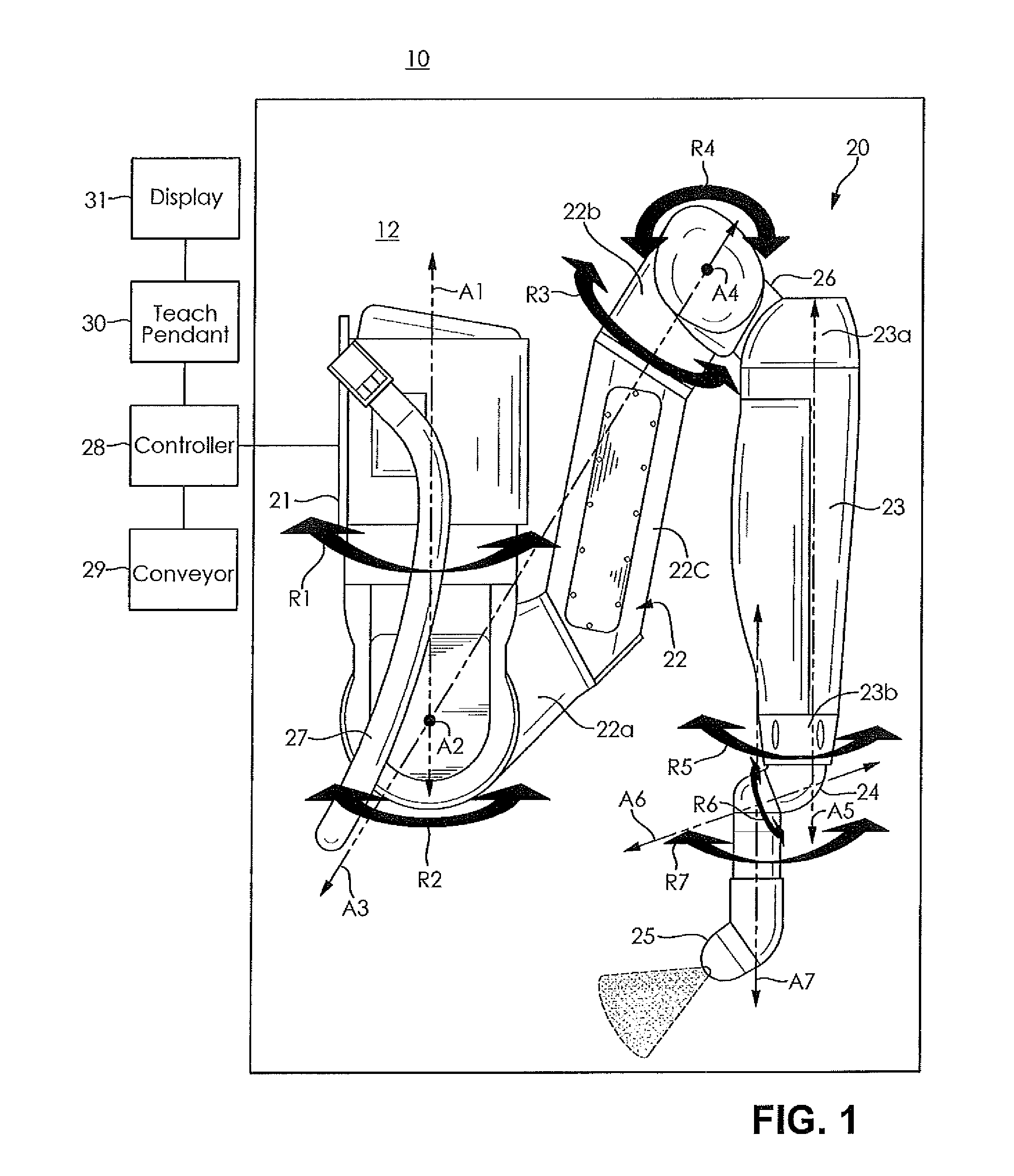Method of controlling a redundant robot
a robot and control method technology, applied in the field of robot controllers, can solve the problems of inability to control a six-axis robot to avoid a robot collision, and occupying linear rail spa
- Summary
- Abstract
- Description
- Claims
- Application Information
AI Technical Summary
Benefits of technology
Problems solved by technology
Method used
Image
Examples
Embodiment Construction
[0020]The following detailed description and appended drawings describe and illustrate various exemplary embodiments of the invention. The description and drawings serve to enable one skilled in the art to make and use the invention, and are not intended to limit the scope of the invention in any manner. In respect of the methods disclosed, the steps presented are exemplary in nature, and thus, the order of the steps is not necessary or critical.
[0021]Referring to FIG. 1, a schematic elevation side view of a seven axis redundant robot 10 according to an embodiment of the invention is shown. A robot arm 20 operates within a robot envelope 12 as illustrated schematically in FIG. 1. In the embodiment shown, the robot arm 20 is configured for paint applications. However, it is understood the robot arm 20 can be configured for any manufacturing application, as desired. The robot envelope 12 is a defined space in which the robot can move such as a paint booth for paint applications, for e...
PUM
 Login to View More
Login to View More Abstract
Description
Claims
Application Information
 Login to View More
Login to View More - R&D
- Intellectual Property
- Life Sciences
- Materials
- Tech Scout
- Unparalleled Data Quality
- Higher Quality Content
- 60% Fewer Hallucinations
Browse by: Latest US Patents, China's latest patents, Technical Efficacy Thesaurus, Application Domain, Technology Topic, Popular Technical Reports.
© 2025 PatSnap. All rights reserved.Legal|Privacy policy|Modern Slavery Act Transparency Statement|Sitemap|About US| Contact US: help@patsnap.com



